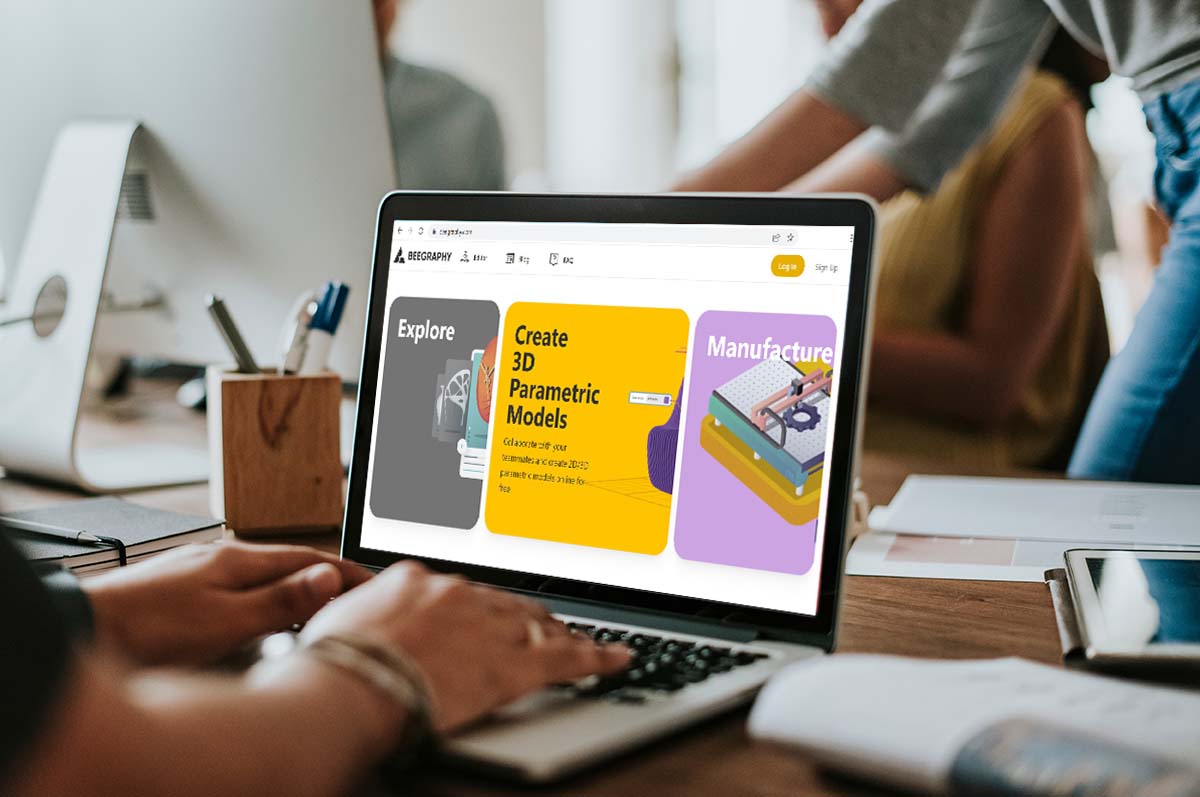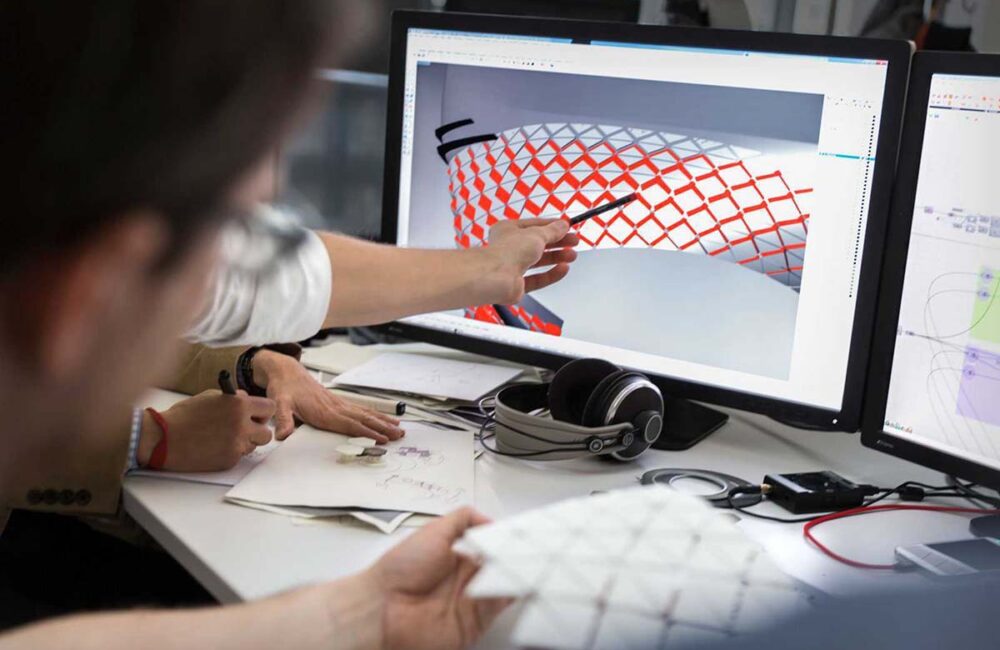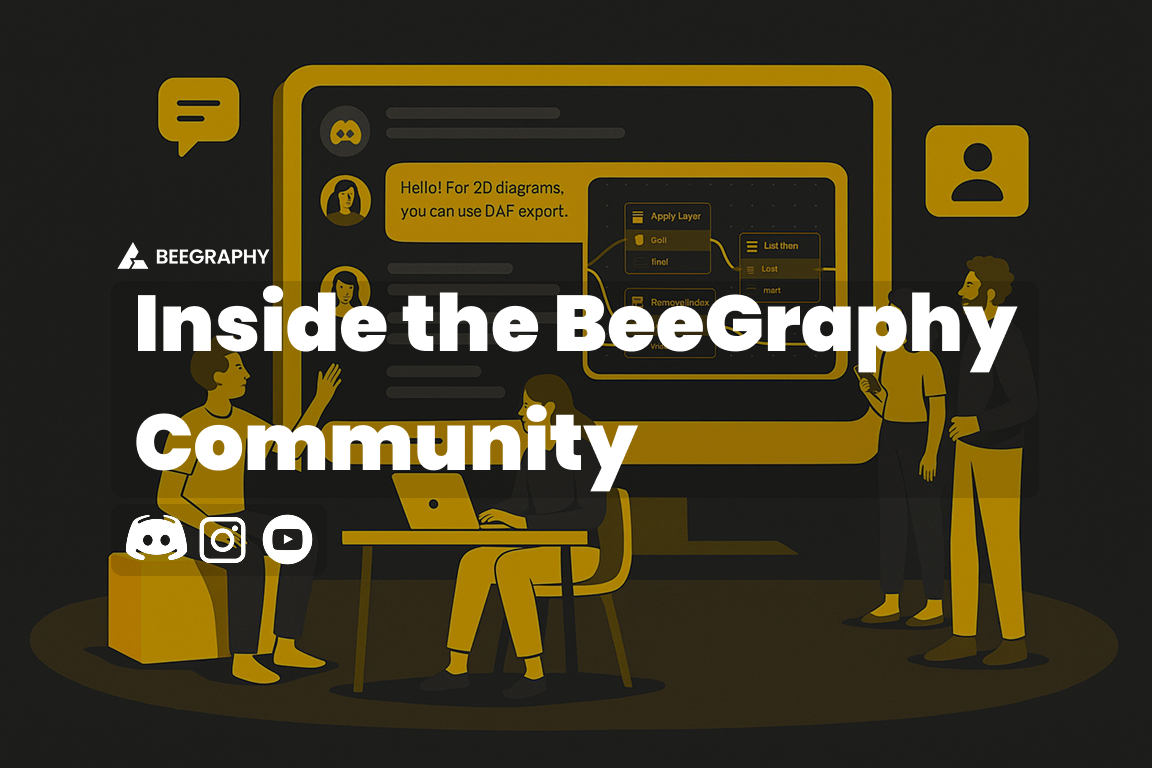Table of Contents
Nowadays, the word “computational” is seeping into every field, and incorporating it with design is gaining ever-growing popularity. Computational design is revolutionizing how we design products and structures, allowing us to push the boundaries of what is possible into uncharted territory.
Combining aspects of computer science, engineering, mathematics, and design enables designers to explore diverse designs and rapidly iterate on solutions while ensuring accuracy and efficiency.
However, when topping all of that with online access, a whole new world of possibilities emerges, opening the door for a wide range of benefits, and that’s what Online Computational Design is all about. From surpassing limited PC capacities to enabling collaboration and sharing in real-time, and much more, online computational design has changed the face of the industry.
We will explore the various benefits of online computational design and how it enables the creation of designs with unprecedented levels of engagement, efficiency, and precision.
Computational Design
What is computational design?
Computational design is an emerging field that uses computer algorithms, machine learning, and parameters to develop solutions that are not only aesthetically pleasing but also cost-effective and highly functional. Offering a higher degree of accuracy and repeatability than traditional methods, designers can produce more consistent results in less time.
Who uses computational design?
Computational design can be implemented in various fields, such as engineering, architecture, fashion design, automotive manufacturing, and more. Let’s take the engineering industry, for example; it can be used to optimize structures for maximum strength or reduce product weight while maintaining safety standards. In the fashion industry, for instance, it can help designers quickly create unique designs from scratch by combining existing elements and patterns to develop something new.

Computational design is considered one of the most effective assistants for additive manufacturing. Image: Shutterstock
Computational design is also increasingly utilized in the Architecture, Engineering, and Construction (AEC) industry to create complex designs and visualizations. Anthony Zuefeldt, an expert in digital transformation within the AEC field, made a genuinely impacting statement during the 2022 Digital Agility Summit, saying, “Every facet of the AEC industry will eventually be affected by computational design, and some have called it the ‘defining moment’ of this decade.”
Manufacturing processes have also become much faster and more streamlined, leading to better products and lower costs. Not only can manufacturers create highly specific parts and components, but it also allows for faster iteration through complex designs. By using computational design in manufacturing, it is possible to reduce costs and time-to-market for products while still maintaining high-quality standards.
Experts can create amazing, aesthetically pleasing, functional projects with the right computational design tool. Undoubtedly, its possibilities are endless, and we will continue to see its applications expand across industries as technology advances.
Computational design online software
Online computational design software utilizes algorithms to create, modify, and analyze designs through a web browser, allowing for advanced instant collaboration features like sharing and editing.
So, just like offline computational design software, online ones use parametric modeling techniques to enable users to define parameters and constraints that can be adjusted to explore different design variations and optimize designs for specific performance criteria. Still, it happens online while multiple users can observe the changes in real time without geographical limits.
Online Computational Design Benefits

Benefits of online computational design: Efficiency, Accessibility, Fabrication, Collaboration, Recency. Image courtesy: Shutterstock
Nowadays, designers can push the boundaries of what was previously thought impossible or impractical. From intricate patterns, 3D models, textured surfaces, and virtual simulations, the possibilities are endless with real-time collaboration via online platforms. In our demonstration of online computational design benefits, we’ll shed light on BeeGraphy as an example and what it offers for users.
Efficiency
As the demand for more efficient and optimized designs increases, designers have been seeking online platforms that help them create unique and eye-catching visuals without spending innumerable hours manually designing each element. In this regard, BeeGraphy Editor uses algorithms to automate the creation process, eliminating much of the manual work that would otherwise be required.
BeeGraphy’s intuitive user interface and parametric features offer designers and hobbyists a wide range of design options in a short time. For example, users can customize their drawings’ length, width, depth, orientation, and geometry to create stunning web-based 3D visuals with unprecedented accuracy and efficiency. This would significantly reduce the time spent designing or editing a product, allowing designers or computational design enthusiasts to focus completely on the creative process.
Accessibility
Accessibility is a key advantage of online computational design software. By moving to the cloud, design software can be accessed from anywhere, at any time, on any device with a web browser, regardless of the operating system.
This means that architects, engineers, and designers can easily access, view, and edit their models from the comfort of their own homes while traveling or on-site. Additionally, team members can collaborate more efficiently as they can all access and work on the same design in real time, regardless of their physical location.
This not only saves time but also makes it easier for teams to work together and share feedback, leading to more efficient and effective designs. Overall, the accessibility that online computational design software provides is a major benefit, allowing professionals to work more flexibly and efficiently, no matter where they are.
Fabrication
Since the design process is entirely automated, it is possible to achieve faster iteration of designs, improved accuracy in measurements, greater precision in manufacturing processes, and increased production efficiency.
BeeGraphy can be used in various industries, from automotive to manufacturing and AEC, as it helps to enhance the prefabrication part of the process by making the product design variations cost-efficient and fast.
Individuals or businesses can generate precise 3D models, customize materials, and analyze the performance of the design in real time, allowing for more efficient production of complex structures with minimum waste of materials. BeeGraphy 3D parametric configurators can be easily embedded into any website using APIs, allowing companies to streamline their fabrication operations further.
Collaboration
The online parametric modeling tool makes creating, editing and sharing 3D models a breeze. By sharing projects, data, and ideas, companies or collaborators can break down communication barriers and increase efficiency as team members work together in real-time on a single project, enabling everyone to contribute their unique skill sets to the task at hand.
BeeGraphy makes it easy to collaborate worldwide by sharing designs, making modifications, and getting feedback quickly. It allows teams to work on multiple projects simultaneously, creating a more unified workflow where everyone can promptly contribute their ideas or expertise.
Updates
Gone are the days when users had to wait for the latest version of their computational design software to be released to access new features. With the online computational design, new features are gradually added, ensuring that users always work with the latest version with the most recent capabilities. This saves time and means that designers can stay up-to-date with the latest tools.
Furthermore, online design tools eliminate the issue of compatibility that often arises when one user works on a different version of the software from another. Incompatibility issues can be frustrating and time-consuming, leading to potential delays in project delivery. However, with online computational design, there are no compatibility issues to worry about. This is because everyone has access to the same version of the software, and changes made by one user are automatically reflected in the project for all users.
In addition to ensuring compatibility, the online computational design allows for more streamlined collaboration. By eliminating the need to exchange files between team members, online design tools allow everyone to simultaneously work on the same project. This enables faster decision-making and greater project efficiency, resulting in better outcomes.
Overall, the online computational design offers significant benefits over traditional software. Its incremental updates and compatibility features allow for seamless collaboration and faster project delivery, all while ensuring that designers always have access to the latest features.
Wrap Up
BeeGraphy Editor is an upcoming software that promises to revolutionize computational design. Its various productive features make it easier for designers to create complex designs quickly and efficiently.

Online computational design and parametric modeling with BeeGraphy. Image courtesy: Shutterstock
With its intuitive interface and easy-to-use editing tools, BeeGraphy Editor is set to become the flagship of computational design. Join the Alpha testing team and experience a revolutionary technology only a few clicks away.
















